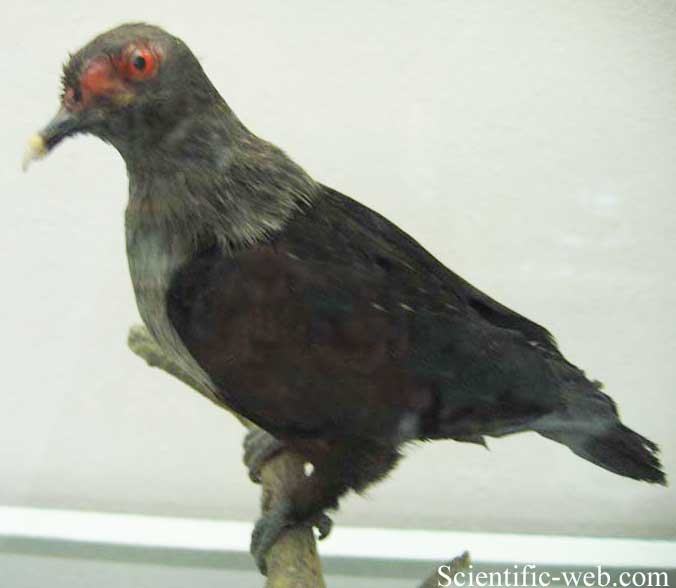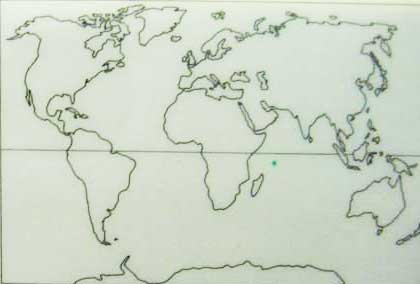
Alectroenas pulcherrima
Superregnum: Eukaryota
Cladus: Unikonta
Cladus: Opisthokonta
Cladus: Holozoa
Regnum: Animalia
Subregnum: Eumetazoa
Cladus: Bilateria
Cladus: Nephrozoa
Superphylum: Deuterostomia
Phylum: Chordata
Subphylum: Vertebrata
Infraphylum: Gnathostomata
Megaclassis: Osteichthyes
Cladus: Sarcopterygii
Cladus: Rhipidistia
Cladus: Tetrapodomorpha
Cladus: Eotetrapodiformes
Cladus: Elpistostegalia
Superclassis: Tetrapoda
Cladus: Reptiliomorpha
Cladus: Amniota
Classis: Reptilia
Cladus: Eureptilia
Cladus: Romeriida
Subclassis: Diapsida
Cladus: Sauria
Infraclassis: Archosauromorpha
Cladus: Crurotarsi
Divisio: Archosauria
Cladus: Avemetatarsalia
Cladus: Ornithodira
Subtaxon: Dinosauromorpha
Cladus: Dinosauriformes
Cladus: Dracohors
Cladus: Dinosauria
Ordo: Saurischia
Cladus: Eusaurischia
Subordo: Theropoda
Cladus: Neotheropoda
Cladus: Averostra
Cladus: Tetanurae
Cladus: Avetheropoda
Cladus: Coelurosauria
Cladus: Tyrannoraptora
Cladus: Maniraptoromorpha
Cladus: Maniraptoriformes
Cladus: Maniraptora
Cladus: Pennaraptora
Cladus: Paraves
Cladus: Eumaniraptora
Cladus: Avialae
Infraclassis: Aves
Cladus: Euavialae
Cladus: Avebrevicauda
Cladus: Pygostylia
Cladus: Ornithothoraces
Cladus: Ornithuromorpha
Cladus: Carinatae
Parvclassis: Neornithes
Cohors: Neognathae
Cladus: Neoaves
Cladus: Columbimorphae
Ordo: Columbiformes
Familia: Columbidae
Subfamilia: Treroninae
Genus: Alectroenas
Species: Alectroenas pulcherrima
Name
Alectroenas pulcherrima (Scopoli, 1786)

References
Deliciae florae faunae insubricae 2 p. 94
Vernacular names
Deutsch: Paradies-Fruchttaube
English: Seychelles Blue Pigeon
español: Paloma azul de Seychelles
suomi: Seychelliensinikyyhky
français: Founingo rougecap
Nederlands: Seychellen-blauwe duif
پنجابی: سشلز نیلا کبوتر
русский: Сейшельский синий голубь
svenska: Seychellblåduva
Tiếng Việt: Bồ câu lam Seychelles
The Seychelles blue pigeon (Alectroenas pulcherrimus), also known as the Seychelles blue fruit dove, is a medium-sized pigeon which inhabits woodland areas of the granitic Seychelles archipelago.
Description
Couple
The Seychelles blue pigeon is about 10 inches (25.4 cm) in length. Its head and breast are silver-grey, and these feathers can be raised when the bird is excited, giving it a ruffled look. Its wings, under-body and tail are dark blue. It has a distinctive bright crimson patch of orbital skin extending from forehead to crown.[1] Its bill is dull yellow and it has dark grey legs. The juvenile is very different, with a dark grey head and bib, dark greenish brown upperparts with pale yellow fringes, dark crown feathers with obvious green edges and a dark pink wattle around the eye.[2]
Distribution and habitat
The Seychelles blue pigeon is found on all the larger granitic islands of the Seychelles, plus Denis Island and Bird Island on the edge of the Seychelles Bank. Numbers have greatly increased since the cessation of human exploitation for food, a practice that died out around the late 1970s. Since then birds have recolonised Curieuse (early 1980s), Denis (late 1980s), Aride Island (1990) and Bird (2009).[2]
Behaviour
It can be found either singly, in pairs or in small groups. In courtship birds fly high above the tree canopy, before plummeting downward at a steep angle, wings held rigidly forward and downward. This procedure may be repeated before landing in a tree. The male bows and coos to the female, raising plume feathers on the neck and head or struts up and down a branch plumes extended, turning his head 180°, then back again.
Feeding
Their diet consists mostly of seeds and fruit.
Breeding
Breeding may take place at any time of the year, but is concentrated in October to April. The nest, built entirely by the female, is an untidy platform of twigs in a tree or shrub. Usually one white egg is laid, occasionally two. Incubation takes about 28 days, fledging about 21 days.[2]
Status and conservation
It was once shot for food and by farmers as an alleged pest, but now the population appears to be thriving. Habitat conservation is important to the continued survival of the species, because blue pigeons have muscular gizzards, which break down seeds to aid digestion. Consequently, unlike other pigeons, their droppings contain no viable seeds.
References
Hume, J.P. 2011. Systematics, morphology, and ecology of pigeons and doves (Aves: Columbidae) of the Mascarene Islands, with three new species. ISSN 1175-5326 Zootaxa, 3124: 1–62. Preview ISBN 978-1-86977-825-5 (paperback) ISBN 978-1-86977-826-2 (online edition)
Skerrett, A and Disley, T. 2011 Birds of Seychelles. Christopher Helm
Retrieved from "http://en.wikipedia.org/"
All text is available under the terms of the GNU Free Documentation License

